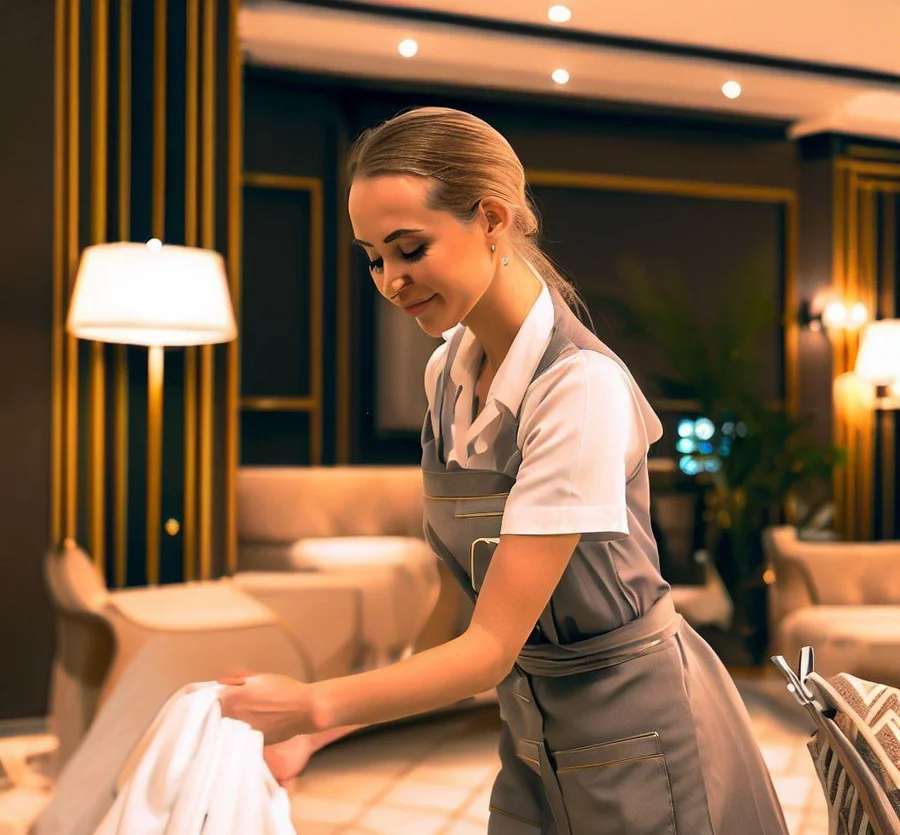The life of a housekeeper in a luxury hotel may seem like a scene out of a horror movie. Alone on a floor, cleaning a vacant room, with the loud drone of the vacuum silencing all sound, they perform some of the most physically demanding work necessary to operate a hotel. On average, they are assigned 10 to 14 rooms a day and must strip beds, dump sheets down laundry chutes, scrub bathroom floors, clean tubs and toilets, empty trash, polish mirrors, clean glasses, vacuum carpets, and much more. And if that wasn’t enough, they also have to endure sexual harassment from guests.

Hospitality staff work tirelessly to understand and anticipate the unique needs and expectations of each guest, ensuring they leave with a lasting, positive impression. Hoteliers and their staff make it their utmost responsibility to cater to each guest and provide them with a home away from home, complete with every comfort, luxury, and convenience they expect. However, in this guest-centric model, the weight of guest opinion can wrongfully supersede the well-being and treatment of hotel workers.
It’s time for the hospitality industry to prioritize the safety of its staff and ensure they are not subjected to sexual harassment or other forms of mistreatment. After all, a positive guest experience cannot come at the expense of staff safety and well-being.
How is the Hospitality Industry addressing workplace safety concerns?
The hospitality industry, which is notorious for high employee turnover rates, also faces alarming rates of workplace safety issues. A survey conducted in Chicago revealed that 58% of hotel workers there have experienced sexual harassment by guests, while nine out of ten hospitality workers have suffered abuse. Similarly, a study of female hotel workers employed by five-star hotels on the Gold Coast, Queensland, found that 44 out of 46 women had experienced inappropriate advances from guests.
For far too long, guest indiscretions were swept under the rug to protect the hotel’s reputation and maintain client satisfaction. However, a shift has occurred, and hotel chains and associations are now taking a stand to protect their employees. On September 6th, 2018, the CEOs of Hilton, Hyatt, InterContinental Hotels Group, Marriott, and Wyndham joined the American Hotel & Lodging Association (AHLA) in announcing the 5-Star Promise. They pledged to provide hotel employees with safety devices, ensuring hotels are proactive in their efforts to prevent and police harassment towards workers.
This promise has led to a search for solutions and practices to create a more secure workplace for every employee, which brings us to the hotel panic button. Until recently, most hotel panic buttons were handheld devices that emit an audible alert or noise to signal an incident or threat. While these were a good initial step, modern hotel infrastructure requires more robust technology and support platforms, especially for employee safety devices.
How can hotels provide a safer workplace for their staff?
In many luxury hotels, outdated panic buttons or noise-makers are no longer a suitable solution when it comes to ensuring employee safety. The size and scale of these properties make it difficult for support to hear the signal of a noise-maker, especially if a staff member is experiencing a medical emergency or impending threat behind a closed door. Additionally, some emergency situations require a more discreet alert system to protect the user’s immediate well-being and prevent the perpetrator from responding to the alert.
The next generation hotel panic button should be a dedicated safety platform that is configurable and customizable to the unique demands of each hotel. A cloud-based hospitality safety platform that integrates seamlessly with a hotel’s existing property management software should provide location-based alerts in the event of an emergency. Hotel staff can press their sidekick panic button, paired with a smart device via Bluetooth, to transmit an SOS signal in a crisis scenario. Using Bluetooth beacons placed throughout the property, support staff can immediately identify the precise room location of an incident to respond in a faster, more effective manner. Those staff members without a smartphone can rely on a standalone LTE panic button that transmits the same location-specific information, helping hoteliers locate an employee within seconds of a distress call.
The system also relies on GPS coordinates to follow an incident in real-time, relaying that information back to support services while maintaining a digital log of all distress reports and incidents. This technology provides immediate response in emergency situations and equips hotels with the software they need to track and report staff-related incidents and concerns. By implementing the next generation hotel panic button, hotels can provide a safer workplace for their staff and ensure that their well-being is a top priority.
